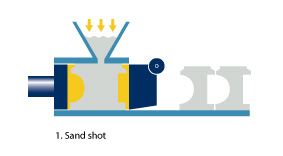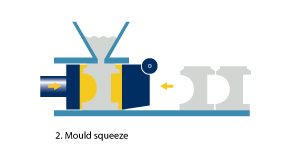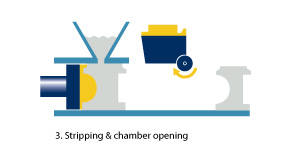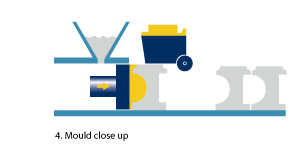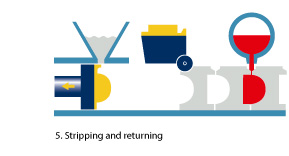Benefits of utilizing the vertical moulding process
- DISAMATIC vertical moulding lines can achieve impressive moulding rates, reaching up to 555 moulds per hour without cores and up to 485 moulds per hour with cores.
- Fast pattern-changing equipment makes vertical moulding flexible and economical for shorter series production at speeds down to 120 moulds per hour with cores. With DISA’s Automatic Pattern Changer (APC), changing pattern plates only halts the moulding line for one minute. Changes with the manually operated Quick Pattern Changer (QPC) can be as short as three minutes.
- A simple and proven core-setting process makes creating hollow parts straightforward. DISAMATIC vertical machines are compact and offer a modern, safe working environment.

